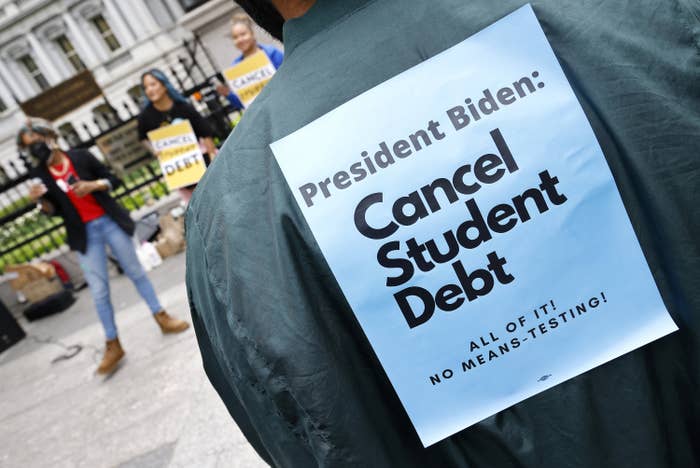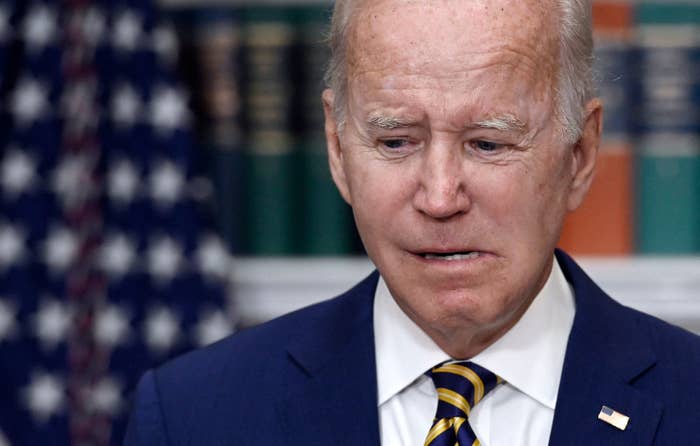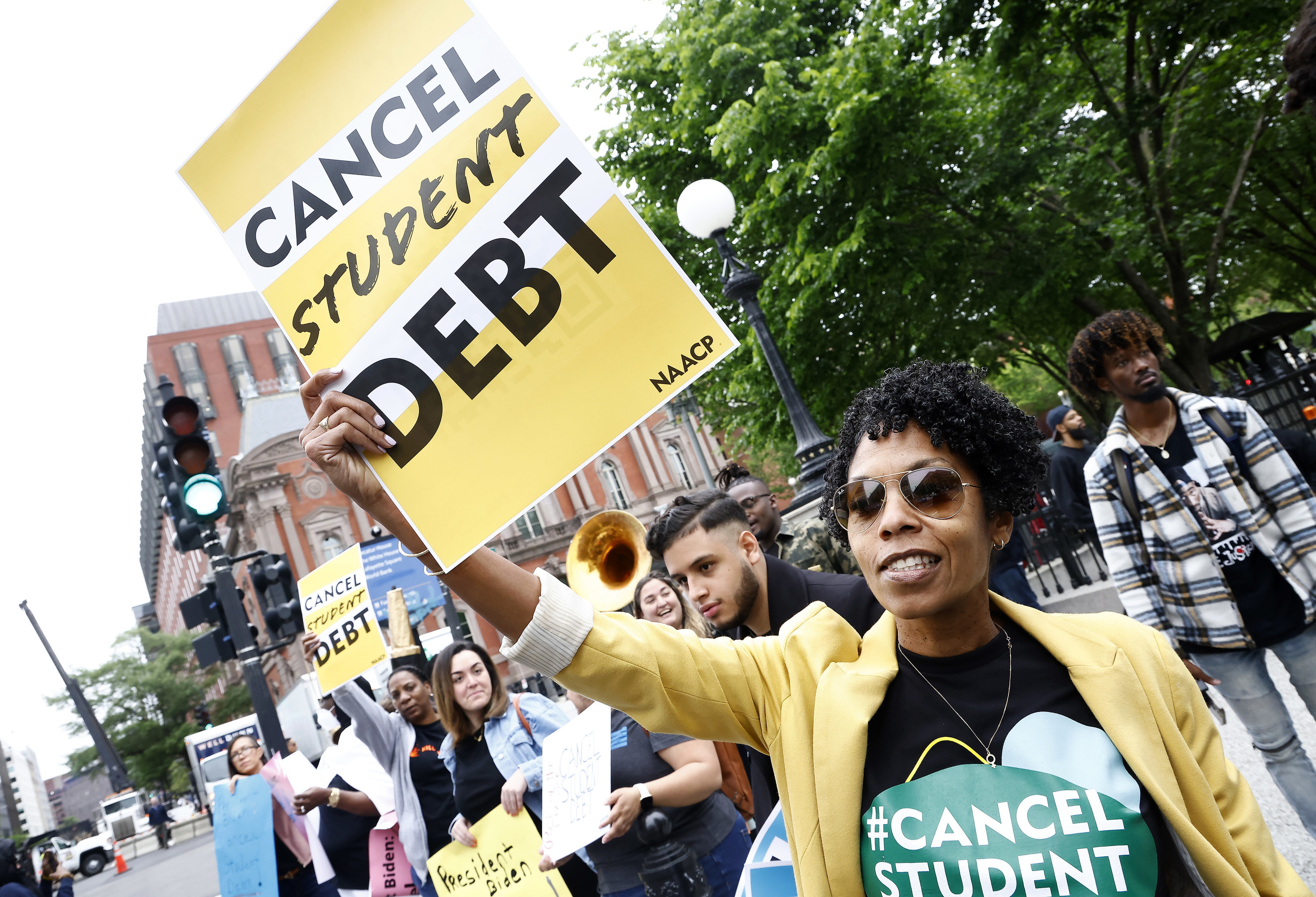
Late on the night of Thursday, Nov. 10, a federal judge in Texas ordered that President Joe Biden’s student loan forgiveness program be scuttled, declaring that it was unconstitutional.
The administration had been taking applications since last month from some of the more than 40 million eligible borrowers. More than 26 million people had already signed up, with over 16 million applications approved.
But the ruling from US District Judge Mark Pittman in the northern district of Texas means that the program has been struck down — for now.
Here’s what we know about where things stand and what could happen going forward.
Who is this judge?
Pittman was appointed to the federal bench by former president Donald Trump in 2019. Prior to that, he’d been a judge in the Texas state court system.
Although he hasn’t been a federal judge for long, he’s established a solid conservative reputation. In August, he struck down a Texas law that barred people aged 18 to 20 from carrying handguns in public. In March, he ruled that the Biden administration couldn’t exempt unaccompanied immigrant children from immediate deportation during the pandemic.
What was the judge’s reasoning in this student loan decision?
Basically, it all came down to the way Biden went about enacting this program through an executive order, rather than through a law passed by Congress. Pittman said that this violated the constitution’s separation of powers.
“In this country, we are not ruled by an all-powerful executive with a pen and a phone. Instead, we are ruled by a Constitution that provides for three distinct and independent branches of government,” Pittman wrote in his 26-page decision.

What legal reasoning was Biden relying on?
Biden had crafted his program by arguing he had the power to do so thanks to a 2003 law passed by Congress called the Higher Education Relief Opportunities for Students Act (HEROES Act). That law empowered the education secretary to waive or modify any federal student loan programs as deemed necessary “in connection with a war or other military operation or national emergency.” Former president Donald Trump had formally declared the COVID-19 pandemic a national emergency in March 2020.
But Pittman decided that the case mirrored the “major questions doctrine” from a Supreme Court case in June between West Virginia and the US Environmental Protection Agency — wherein the court said that a federal agency needs to be able to point to “clear congressional authorization” when trying to regulate an issue of major political or economic significance — and that the HEROES Act wasn’t enough.
He said that the 2003 law didn’t mention anything about forgiving loans, that the administration hadn’t shown a connection between the program and the pandemic emergency (which, the judge noted, Biden had told 60 Minutes was “over”), and that because the Education Department hadn’t previously pointed to the HEROES Act in order to cancel student loans, the fact that they were doing so now was probably evidence that it didn’t authorize them to do so.
With this decided, the judge then ordered the whole program be struck down and not just put on pause. “First... it is a complete usurpation of congressional authorization implicating the separation of powers required by the Constitution,” Pittman said. “Second, the Program does not require a significant administrative winddown period, as loan forgiveness has not started.”
What made this legal challenge different from the others?
Biden’s program had already been put on a temporary pause last month thanks to an injunction from the 8th US Circuit Court of Appeals, which is weighing an appeal from a group of Republican states. However, that appeals court hadn’t struck down the program entirely, and the administration was continuing to accept applications from borrowers in the meantime.
What makes this decision different is that Pittman determined that the plaintiffs had legal standing to bring a challenge to the program in the first place. Others who have tried to fight the law in court have failed at the first hurdle after judges ruled they couldn’t prove they were harmed by it.
But this new challenge was brought by Myra Brown and Alexander Taylor, two people with student loans whose legal challenge was backed by a conservative advocacy group. Brown didn’t like that she didn’t qualify for forgiveness because her loans were through private lenders and not the government, while Taylor wasn’t happy that he could only qualify for $10,000 and not $20,000 in relief as he didn’t receive a Pell Grant.
The judge decided that their situations both amounted to some form of harm — namely, “a concrete interest in having their debts forgiven to a greater degree” — meaning they had standing to sue.
What happens next?
The ruling means the program can’t — for now — move forward.
Indeed, the morning after the ruling the website where people registered for forgiveness was already announcing that the plan had been blocked.
But the Biden administration has already appealed the decision to the 5th Circuit Court of Appeals, where Texas sits and which has a reputation for being the most conservative in the country.
Whatever happens there, it’s likely that a Supreme Court challenge will follow. Justice Amy Coney Barrett has already refused two previous challenges that lower courts had rejected, but the justices have yet to fully examine the program.

I already applied. What happens to my application?
The short answer is nothing yet. Even if you were approved, you won’t be getting relief for now as the decision works its way through the courts.
Per the student loan forgiveness website, the administration will continue to hold your application, pending a final decision.
“For the 26 million borrowers who have already given the Department of Education the necessary information to be considered for debt relief — 16 million of whom have already been approved for relief — the Department will hold onto their information so it can quickly process their relief once we prevail in court,” White House press secretary Karine Jean-Pierre said in a statement.
You can subscribe here for further updates from the Education Department.
I hadn’t applied yet. Does this mean I’ve missed out?
Not necessarily, but again, that all depends on what ultimately happens to the program. If it gets revived, or if the appeals court simply lets applications resume while it ponders the program, it’s likely that you will be able to put in an application.
The administration had set a deadline of Dec. 31, 2023, for applications, but it’s not clear how the legal developments might affect that timeline.
Will the pause on repayments be extended?
Biden had previously said the pause on repayments, which has been extended seven times during the pandemic, would expire at the end of this year. The ongoing legal challenge might mean some borrowers have to restart payments while they await a final court ruling.
With that in mind, Biden announced on Tuesday, Nov. 22, that his administration would extend the pause until June 30, 2023, in order to give the Supreme Court time to decide on the matter once and for all.
"It isn't fair to ask tens of millions of borrowers who are eligible for relief to resume their student debt payments while the courts consider the lawsuit," he said in a video posted to social media.
UPDATE
This story was updated with news of the Biden administration extending the pause on repayments.
